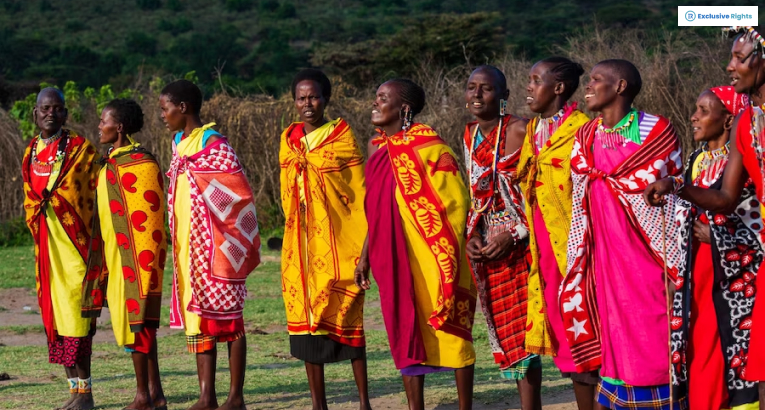
Table Of Contents
- What Is Female Circumcision In Africa?
- Defining the Unknown: What Exactly is Female Circumcision?
- Types Unveiled: From Symbolic to Extreme
- Behind Closed Doors: Why Does it Happen?
- Facing the Facts: Health Risks and Realities
- Shaking the Foundations: The Fight Against Female Circumcision
- Education as the Antidote: Knowledge is Power
- Global Spotlight: It’s Everyone’s Business
- Is Female Circumcision Legal In Africa?
- The Legal Patchwork: Laws Vary Across Borders
- Outright Bans: Taking a Stand
- Regulated Practices: Walking the Tightrope
- Enforcement Challenges: Turning Words into Actions
- Global Initiatives: Pushing for Change
- Legal Gaps: Room for Improvement
- Education as a Catalyst: Changing Minds, Changing Laws
- Behind Closed Doors: Why is it Practiced?
- Breaking Chains: The Fight Against female circumcision in Africa
- Health Hazards: Facing the Consequences
- Changing Narratives: Education as a Catalyst
- Final Thoughts
The Truth About Female Circumcision In Africa
Hello there, dear readers! Today, we are going to delve into a sensitive and complex topic that has been the subject of much debate for decades – the issue of female circumcision in Africa.
This traditional practice is the partial or total removal of outer female genitalia.
Moreover, it has been a long tradition in many African cultures and is often referred to as cultural and religious beliefs.
However, female circumcision in Africa has been linked to numerous health complications, including infections, childbirth issues, and even death.
In this article, we will explore the reasons behind this practice, the cultural and social factors that contribute to it, the health risks associated with it, and the efforts being made to end it.
So, fasten your seat belts and get ready for an honest and detailed conversation on this important issue.
What Is Female Circumcision In Africa?
Hey folks, buckle up for a ride into the heart of a topic that’s often discussed in hushed tones – female circumcision in Africa.
Today, we’re lifting the veil and revealing the layers of this complex practice.
Defining the Unknown: What Exactly is Female Circumcision?
So, what’s the deal with female circumcision, you ask? Well, it’s a cultural practice that involves altering or removing parts of the female genitalia.
Moreover, it’s not a straightforward story, though – there are different types, each with its own set of customs and beliefs.
Types Unveiled: From Symbolic to Extreme
Hold on tight as we navigate through the types. Some are more symbolic, like a minor nick, while others involve more drastic measures.
Similarly, including the removal of the clitoris and labia.
Moreover, it’s a patchwork of rituals, each woven into the fabric of diverse African cultures.
Behind Closed Doors: Why Does it Happen?
Now, let’s delve into the why. The motivations behind female circumcision are as varied as the colors of the African sunset.
Some communities believe it’s a rite of passage into womanhood, while others see it as a way to maintain purity and societal norms. Moreover, spoiler alert, it’s not all sunshine and rainbows.
Moreover, there are darker consequences to explore.
Facing the Facts: Health Risks and Realities
Time to confront the not-so-pretty side. Female circumcision isn’t just a cultural quirk; it comes with health risks.
We’re talking infections, complications during childbirth, and psychological scars that can last a lifetime.
Moreover, It’s a harsh reality that can’t be ignored.
Shaking the Foundations: The Fight Against Female Circumcision
But wait, there’s hope on the horizon! Activists, organizations, and communities are standing up against this age-old tradition.
Laws are changing, awareness is spreading, and the tides are turning. It’s a movement that’s reshaping the narrative around female circumcision.
Education as the Antidote: Knowledge is Power
Enter the hero of our story – education. The more we know, the better equipped we are to tackle this issue.
Moreover, communities are educating themselves, breaking free from outdated traditions, and embracing a new narrative that prioritizes the well-being of women and girls.
Global Spotlight: It’s Everyone’s Business
Before we wrap up, let’s zoom out. Female circumcision isn’t just an African affair.
Moreover, it’s a global concern. It demands a collective effort, understanding, and support from all corners of the world.
Is Female Circumcision Legal In Africa?
Alright, dear readers, today’s journey takes us into the realm of legality surrounding a controversial topic – female circumcision in Africa.
Get ready for a rollercoaster as we unravel the legal web surrounding this age-old practice.
The Legal Patchwork: Laws Vary Across Borders
So, is female circumcision legal in Africa? Well, it’s not a simple yes or no. The legal landscape is as diverse as the continent itself.
Moreover, Some countries have outright banned it, while others have regulations allowing certain forms.
It’s a legal patchwork that reflects the complexity of cultural traditions.
Outright Bans: Taking a Stand
In the vanguard of change, some African countries have taken a bold step – an outright ban on female circumcision.
Moreover, These countries are saying, “Enough is enough!” and have put their foot down to protect the rights and well-being of women and girls.
Regulated Practices: Walking the Tightrope
On the flip side, there are countries that have chosen a middle ground, allowing regulated forms of female circumcision.
Moreover, The idea here is to strike a balance between cultural practices and safeguarding the health and dignity of individuals.
Enforcement Challenges: Turning Words into Actions
Even where there are laws against female circumcision, enforcement can be a thorny issue.
Deep-rooted cultural beliefs and lack of resources sometimes hinder effective implementation.
Moreover, It’s a reminder that changing legal frameworks is just the first step – turning words into actions requires a concerted effort.
Global Initiatives: Pushing for Change
Zooming out from the continent, there’s a global push against female circumcision. International organizations and activists are working hand in hand with African nations to create a united front against this practice.
Moreover, It’s a reminder that this isn’t just an African issue; it’s a global concern.
Legal Gaps: Room for Improvement
However, it’s important to note that legal progress doesn’t mean the end of the story. There are still gaps in legislation, and the road to eradicating female circumcision is paved with challenges.
Moreover, Continued efforts are needed to close these gaps and ensure the full protection of women and girls.
Education as a Catalyst: Changing Minds, Changing Laws
In the battle against female circumcision, education emerges as a powerful weapon.
Moreover, The more communities understand the health risks and violation of human rights associated with this practice, the more likely they are to advocate for legal change.
Behind Closed Doors: Why is it Practiced?
Now, let’s dig into the why. The reasons behind female circumcision are as diverse as the locals practicing it.
Moreover, Some believe it keeps a girl’s purity; others see it as a rite of passage into womanhood.
But, and it’s a big but, it’s crucial to note that this practice is a breaking of human rights and poses serious health risks.
Breaking Chains: The Fight Against female circumcision in Africa
Fortunately, the tides are turning. Organizations and activists across Africa and beyond are working tirelessly to put an end to female circumcision in Africa
Moreover, Governments are passing laws, communities are educating themselves, and brave individuals are speaking out against this age-old tradition.
Health Hazards: Facing the Consequences
Let’s talk about the elephant in the room – the health risks. Female circumcision in Africa can lead to severe physical and psychological consequences.
Moreover, From infections and complications during childbirth to long-lasting trauma, the aftermath is far from benign.
Changing Narratives: Education as a Catalyst
Education is the game-changer. As awareness spreads and communities become more informed, there’s hope for change.
Moreover, Empowering individuals with knowledge about the health risks and the violation of human rights associated with female circumcision in Africa is crucial for dismantling this harmful practice.
Final Thoughts
There you have it – a glimpse into the complex world of female circumcision in Africa. It’s a topic that demands our attention, understanding, and action.
So, let’s keep the conversation going, break the silence, and work towards a world where every woman and girl can live free from the shadows of this harmful practice.
Read Also:









